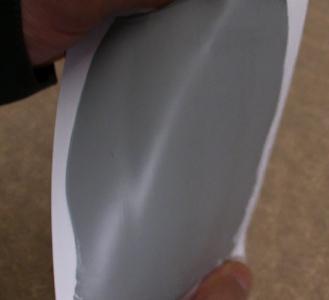Flexible Adhesive
Flexible Adhesive: Versatile Solution for Strong, Durable Bonds
Flexible adhesive is a versatile and reliable product that plays a crucial role in various industries and applications. Its unique formulation allows for strong and durable bonds while accommodating movement and flexibility. In this article, we will explore the benefits and uses of flexible adhesive, its key features, and tips for effective application.

Benefits of Flexible Adhesive
1. Versatility:
– It is suitable for bonding a wide range of materials, including wood, metal, plastic, glass, and ceramics.
– It offers excellent compatibility and adhesion to both porous and non-porous surfaces, providing versatility in different projects.
2. Flexibility and Movement:
– The key advantage of flexible adhesive is its ability to withstand movement and expansion in bonded materials.
– It maintains its bond even in applications where there are temperature fluctuations, vibrations, or structural shifts.
3. Strong and Durable Bonds:
– Flexible adhesive provides exceptional bond strength, ensuring long-lasting and reliable connections.
– It creates resilient bonds that can withstand stress, impacts, and environmental conditions, contributing to the durability of the assembled parts.
Uses of Flexible Adhesive
1. Construction and Building:
– Flexible adhesive is widely used in the construction industry for bonding materials such as flooring, tiles, skirting boards, and molding.
– It allows for flexibility in structural elements and accommodates the natural movements of the building.
2. Automotive and Manufacturing:
– In the automotive industry, flexible adhesive is employed for bonding components, including trim, panels, and interior parts.
– It provides vibration resistance and enhances the overall strength and durability of the vehicle.
3. Crafts and DIY Projects:
– Flexible adhesive is a popular choice for crafts, DIY projects, and repairs.
– It enables the bonding of various materials, such as fabric, leather, foam, and plastic, ensuring a reliable and flexible bond.
Tips for Effective Application
1. Surface Preparation:
– Ensure that the surfaces to be bonded are clean, dry, and free from grease, dust, or debris.
– Smooth or roughen the surfaces if necessary to optimize adhesion.
2. Application Techniques:
– Follow the manufacturer’s instructions for the recommended application method, such as using a brush, trowel, or adhesive gun.
– Apply the adhesive evenly and avoid excessive application to prevent squeezing out when joining materials.
3. Curing and Drying Time:
– Allow sufficient time for the adhesive to cure and dry according to the manufacturer’s guidelines before subjecting the bond to stress or load.
Conclusion
Flexible adhesive is a valuable solution for achieving strong and durable bonds while accommodating movement and flexibility. Its versatility, excellent bond strength, and ability to withstand various environmental conditions make it a preferred choice in multiple industries. Whether it’s construction, automotive, or DIY projects, the use of flexible adhesive ensures reliable connections that stand the test of time. By following proper surface preparation and application techniques, you can maximize the benefits of this versatile adhesive and achieve successful bonding in your projects.
Showing all 6 resultsSorted by popularity





